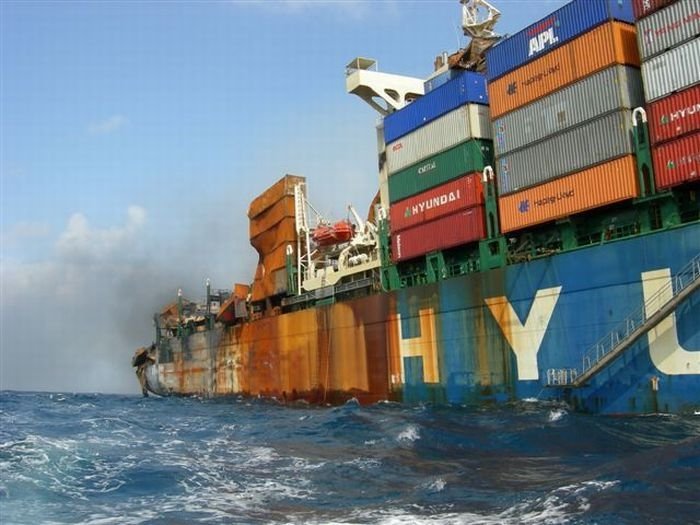|
|
Container Ship Accident
|
The first container ship in the United States was the Ideal-X , a T2 tanker, owned by Malcom McLean, which carried 58 metal containers between Newark, New Jersey and Houston, Texas on its first voyage, in April 1956.
Today, approximately 90% of non-bulk cargo worldwide is transported by container, and modern container ships can carry up to 15,000 Twenty-foot equivalent units (TEU). As a class, container ships now rival crude oil tankers and bulk carriers as the largest commercial vessels on the ocean.
Container ships are designed in a manner that optimizes space. Capacity is measured in Twenty-foot equivalent unit (TEU), the number of standard 20-foot containers measuring 20 × 8.0 × 8.5 feet (6.1 × 2.4 × 2.6 metres) a vessel can carry. This notwithstanding, most containers used today measure 40 feet (12 metres) in length. Above a certain size, container ships do not carry their own loading gear, so loading and unloading can only be done at ports with the necessary cranes. However, smaller ships with capacities up to 2,900 TEU are often equipped with their own cranes.
|
|









